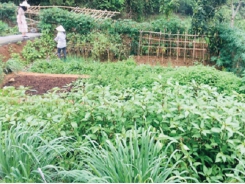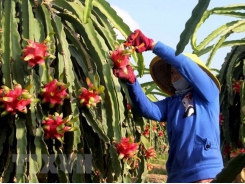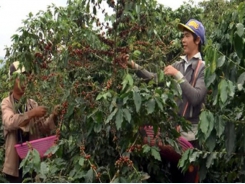Vietnam hikes imports of animal feed

Vietnam bought US$1.3bn worth of imported animal feeds and materials for animal feed production in the first four months of this year, up 2.4% against the same period last year, according to data from the country's Ministry Agriculture and Rural Development.
Last year, Vietnam spent nearly US$3.9bn importing animal feeds and materials for animal feed production, with the biggest import market being Argentina, followed by the US, then Brazil and China, as per data from the General Department of Vietnam Customs, reported local media.
About 65-70% of complete feed or feed ingredients are imported in Vietnam, noted the most recent USDA Gains report on that country’s feed sector. The USDA sees that trend continuing as the Vietnamese feed industry continues to grow and local supply cannot keep pace with the increased demand.
Imported raw materials
Imported raw materials include soybean meal, corn, DDGS, feed wheat, and various kinds of meal and bran like copra, canola, rapeseed meal, and wheat bran. Imported ingredients also include animal protein sources such as meat and bone meal (MBM) and fishmeal.
“Feed wheat is increasingly becoming an important alternative energy source for the animal feed industry in Vietnam. Yearly feed wheat import volumes vary, depending on their price competitiveness with corn.”
Over this year and the next, the USDA estimates that the use of homemade feed in Vietnam will decrease continuously as the backyard animal husbandry industry shrinks due to disease and food safety issues.
Expansion seen despite disease challenges
The US agency, in that April 2019 outlook, anticipates further growth in the Vietnamese industry this year, despite challenges.
The report outlined how Vietnam is one of world’s to“Today, the Vietnam hog industry is facing African Swine Fever (ASF), which will disrupt production and the feed market in the coming years. However, despite the issues in the animal husbandry sector, Vietnam’s feed industry is still expected to expand at a modest rate in calendar year (CY) 2019, supported by the higher growth in aquaculture and broiler industries. Post forecasts that the sector remain almost unchanged in CY 2020.”
USDA: Anticipated developments in the Vietnamese feed industry
Demand-side
- In 2019, the USDA predicts that total demand will increase slightly, from 30 to 30.5 million metric tons (MMT), while it forecasts that total demand will remain at the same level in 2020.
- While animal feed demand will decline slightly, aqua feed production will make up a larger part of total production, rising from 6.2 MMT in 2018 to 6.8 MMT in 2019 and 7.0 MMT in 2020.
- Within animal feed, the true decline is from the homemade sector because ASF is mainly affecting small-scale farms. Manufactured feed is still increasing, mainly for the poultry sector. There is also the decrease in homemade aqua feed, as large feed manufacturers change focus from the hog sector with no growth potential, to the aqua sector.
Supply-side
- Corn and DDGS imports are likely to increase in 2019.
- Overall, in 2019 feed wheat imports will decline from 2018 due to uncompetitive prices and uncertainty over quarantine inspections due to recent Cirsium arvense detections.
- Supplies of local broken rice and local cassava for feed are declining. p pork consuming countries and stands second in Asia only to China, with the hog industry the key driver of the local feed industry. It noted that, after the 2017 price crash crisis, only big players with fully integrated production cycles survived, as they could produce with very tight margin.
Related news
Tools

Phối trộn thức ăn chăn nuôi

Pha dung dịch thủy canh

Định mức cho tôm ăn

Phối trộn phân bón NPK

Xác định tỷ lệ tôm sống

Chuyển đổi đơn vị phân bón

Xác định công suất sục khí

Chuyển đổi đơn vị tôm

Tính diện tích nhà kính

Tính thể tích ao




 Expectation from model of organic shrimp – rice…
Expectation from model of organic shrimp – rice…  Domestic coffee prices bounce back
Domestic coffee prices bounce back